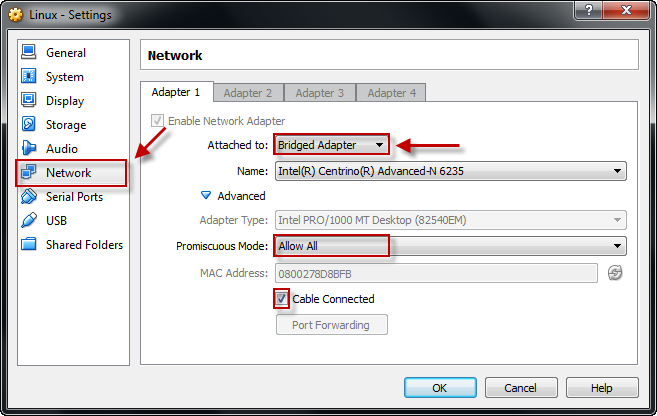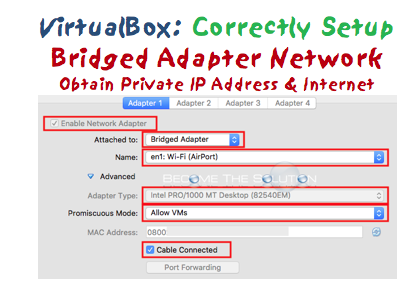

This is how a guest configured with NAT and host-only access looks like. It will be configured automatically and it will be giving your guest access to internet without opening any inbound access. This is the default and the simplest way to give your guest external access.Įach VM comes pre-configured with a NAT Adapter and its a good idea to leave it in place even if configuring other types of adapters. This is the only VirtualBox networking configuration that gives a guest direct external access and allows direct routing form host to guest. The advantage of this approach is that you set static address for the host-only interfaces, which is a requirement when building topologies for purpose, and the guest VMs can be accessed directly on their interface from processes running on the guest. If the guests must be accessible from the host, by routing directly to a guest's interface, a second Host-only adapter can be configured for this purpose. The typical method of allowing guest external network access is to configure a NAT adapter on the guest. For more details see Segmentation Offloading Routing In order to take advantage of it, make sure segmentation offloading is enabled in guest OS. Segmentation offloading is essential for high performance. virtio and Intel PRO/1000 offer segmentation and checksum offloading. Performance-wise, virtio adapter is preferable to Intel PRO/1000, which is preferable to PCnet.


VirtualBox provides a number of virtual network adapters: Paravirtualized Nework (virtio-net), Intel PRO/1000 MT Server (82545EM), PCnet-FAST III, etc. This article was written with VirtualBox 5.0.4.
#Virtualbox bridged adapter manual


 0 kommentar(er)
0 kommentar(er)
